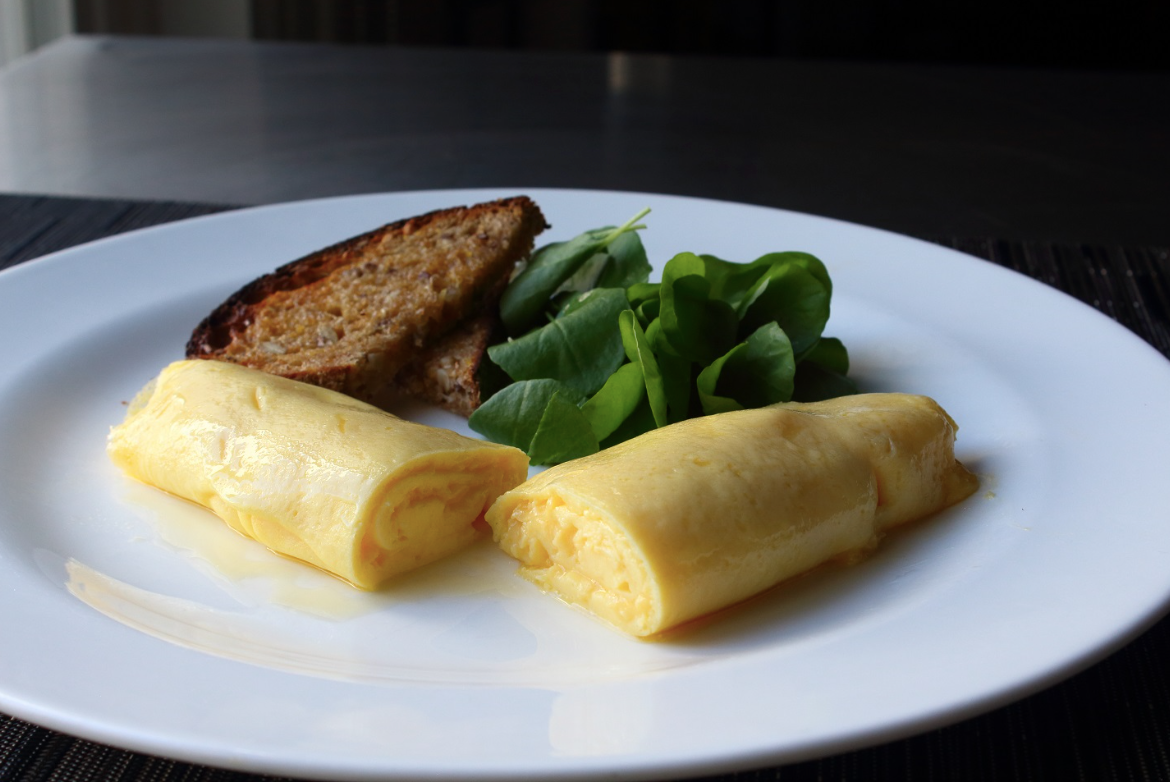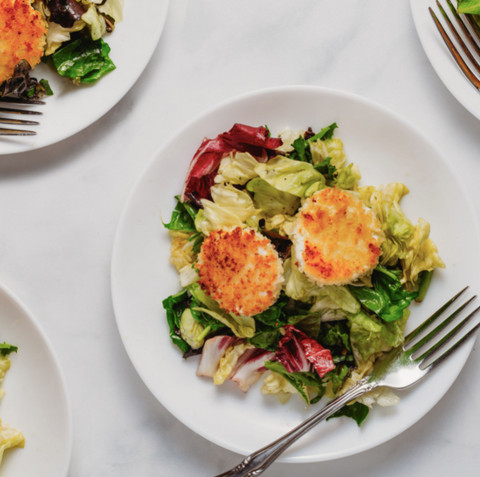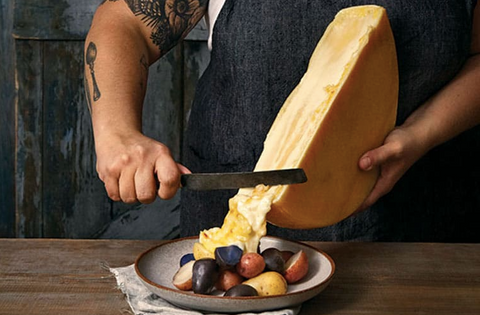French omelette is very famous in the world. French omelette is very delicious and healthy. French omelette is a dish made from eggs quickly cooked with butter or oil in a frying pan, sometimes folded around a filling such as cheese, vegetables, meat (often ham or bacon), or some combination of the above. The word "omelette" was first used to refer to this dish in the mid-16th century (the late Middle French "omelette"), deriving from the ancient Latin word lacuna, which means egg.
In contemporary usage, the French word "omelette" is applied exclusively to variants of this dish. Still, it encompassed a wider variety of very different egg dishes in former times, including an unsweetened pancake made with beaten eggs and milk as late as 1878 was called an omelette by John Ruskin's cook.
Why is it called a French Omelette?
The French omelette is a classic dish that is delicious, simple and quick to make. But wait, why is it called a French omelette? There are a few theories on this.
The first theory comes from culinary history. It is said that the French chefs in the 19th century invented this dish.
Another theory states that the technique used to make this omelette was brought to France by Napoleon Bonaparte when he returned from Egypt. This is probably because the word omelette comes from the Latin word (lacinia), which means a thin slice of meat.
And finally, it is also possible that we owe the origin of this recipe to the fact that eggs are always present in French cuisine.
How is a French Omelette different from a traditional Omelette?
- A French omelette, or omelette, is a classic egg dish that can be served for breakfast, lunch or dinner. It's made with beaten eggs cooked in a skillet until they are set and then folded over to make a half-moon shape.
- A traditional omelette is also made with beaten eggs cooked in a skillet. A classic omelette may be folded over, but it may also be rolled up like a jelly roll or just left flat in the pan.
- The difference is that a French-style omelette is creamy and soft inside, lightly browned on the outside and has no fillings. A traditional omelette can have fillings — usually cheese, vegetables or meat — and soft or firm in texture.
Although there are many variations, the basic process of making an omelette is to stir beaten eggs with salt and pepper (or other seasonings) over low to medium heat. If you want your omelette to be fluffy and "open," push the cooked edges into the middle of the pan and tilt the pan so that the uncooked egg can flow underneath. For an omelette with a "closed" texture, keep rocking the pan until most of the egg has solid.
Basic characteristics of a French Omelette
While there are many ways to cook eggs, some methods are more impressive than others. Making a French omelette is one of the most remarkable ways to prepare eggs. French omelette is light, fluffy, and delicious, not to mention beautiful. When made properly, they look like a professional chef made them.
Here are three characteristics of a French Omelette:
- The eggs are cooked on low heat for an extended period. This gives them a rich taste and makes them fluffy.
- They contain only cheese and herbs, with no meat or vegetables.
- The outside of the eggs is slightly browned when done cooking.
The four types of omelettes
The world is your omelette. There are many types of omelettes, and you can build one to suit any mealtime by using the right ingredients.
- The most common omelette is eggs, butter, milk and cheese. The French like to add herbs to their omelettes to give them an extra kick. It's easy to see why this combination became so popular. A good cheese omelette is a satisfying meal at breakfast, lunch or dinner. You can also make it vegetarian by substituting cream for the milk and cheese for a lighter touch.
- The second type of omelette is made with eggs and ham, bacon or sausage. This is a great way to start your day because it gives you a nice blend of protein and carbs — plus the added benefit of a little fat from the meat or grease from the bacon or sausage. This type of omelette should be eaten hot because the eggs will cook over time and dry as they cool off.
- The third type of omelette is made with eggs, vegetables, meat and cheese. This creates an excellent meal that combines several different flavours into one dish that's easy to eat on the run.
- The fourth type of omelette is made with eggs and onions or other vegetables. It gives amazing taste.
Steps in the procedure for making a French Omelette
The steps for making a French omelette are similar to those for other omelettes, but the French technique is designed to keep the eggs fluffy and not rubbery.
- Break two eggs into a bowl. Add 1 Tbsp. of milk per egg.
- Beat the eggs with a fork until the yolks and whites are well blended, about 30 seconds or so.
- Heat 2 Tbsp. of butter in an omelette pan over medium heat until it's hot enough that a drop of water sizzles on the surface, but not so hot that the butter burns. (If you have a gas stove, you can use medium-high heat instead.)
- Pour in the beaten eggs and let them sit for 10 seconds or so. While they're sitting, use your fork to stir up any thick parts of the egg mixture that have settled to the bottom of the bowl. Then pour them into the pan.
- Use your fork to turn over any parts of the omelette that haven't been set yet, so they cook evenly on both sides. Keep doing this for 30 seconds or until most of your omelette is set (but still soft). You don't want it to be fully cooked yet

Are French Omelettes runny?
The perfect French omelette should be creamy, not runny. But being a perfect French omelette maker is hard and requires practice. So don't beat yourself up if your first attempts are more liquid than creamy.
A French omelette is made by adding beaten eggs to a hot pan with butter. The eggs are stirred until they are set and then flipped over, so the other cooks. Both sides are slightly browned in a perfect world, and the middle is creamy and yellow.
There are two ways you can go wrong:
- You use too little butter or increase the heat too much, which causes the eggs to cook too fast and become hard or rubbery. Make sure you have enough butter on hand.
- You flip the omelette too soon or convert it incorrectly (too fast, with a jerk). You should allow enough time for the eggs to set before flipping them over. Flip them by folding one side over the other instead of using a plate to turn them over.
Good fillings for Omelettes
When making an omelette, it is important to remember that you are cooking the eggs and not the fillings. So, whatever filling you add should not require a long cooking time.
For example, chicken, ground meat or meat strips take along to cook and do not make good omelette fillings. Onions and bell peppers are also better avoided as fillings because they have high water content, making the omelette soggy.
The best fillings to use don't require cooking and can be added directly into the beaten eggs and cooked along with them. This includes grated cheese (which should also be mixed into the beaten eggs), mushrooms, spinach, tomatoes etc.
- Cheese
Cheese is a staple filling for omelettes. All varieties can be used, from cheddar to feta to goat cheese, but Swiss and Parmesan are particularly popular options. Shred the cheese or break it into small chunks before adding it to the omelette.
- Vegetables
Omelettes are an excellent way to incorporate vegetables into your diet. They can be sauteed beforehand with olive oil, diced and added raw, or even left whole as a side dish (some people even eat omelettes inside grilled tomato halves). Popular vegetables include mushrooms, bell peppers, onions and tomatoes.
- Meat
Meat is another common filling for omelettes. Before adding the meat to the omelette, cook it in a separate pan until done. Bacon and ham are common ingredients, but other meats like chicken and turkey work just as well.
Do you need to put milk in an Omelette?
Making an omelette without milk is a common question, and the answer is a resounding yes!
As many people have discovered over the years, adding milk when making an omelette is unnecessary and doesn't do anything to enhance the taste or texture of the egg.
However, there's still a lot of confusion about it. Omelettes are supposed to be made with just eggs and maybe a little butter and salt, but people insist that adding things like milk or water makes them fluffier.
The truth is that adding any liquid into your omelette other than butter will make it watery, which is not what you want if you're trying to achieve a fluffy texture. Milk will also curdle if cooked too long at high temperatures (like in an omelette), so it's better left out altogether unless you plan on eating your eggs immediately after cooking them - then go ahead!
French Omelette is healthy option
The omelette will have a higher fat content, but the egg yolks will make it a healthier choice.
Eggs are the perfect food. They contain high amounts of protein and fat (mostly unsaturated fats) and low carbs. Their nutritional value is similar to breast milk. All essential amino acids are present in them; they are rich in vitamins and minerals and contain numerous antioxidants.
Cooking them will add extra calories from the oil used, but olive oil means excess healthy fats for your body. Also, if you eat more than one omelette (which you probably will), you will end up with a net negative energy balance because of the amount of energy needed to cook it.
Making Omelettes more fluffy
However, the real secret to fluffy omelettes is not in the ingredients but the recipe. First, omelettes are whisked until the eggs are aerated and light. To make an omelette at home, follow these steps:
- Separate the egg whites from the yolks. Add a pinch of salt to the whites and whisk them until firm peaks form (when you lift the whisk, the whites should stand on their own without collapsing).
- Mix the yolks with a few drops of water or milk, and then fold them into the egg whites. Let the mixture sit for a moment to evaporate some of the water.
- Melt some butter in a skillet over medium heat. Once it begins to foam, pour in your egg mixture and let it cook undisturbed until it sets on the bottom and around the edges. The top will still be runny at this point.
- To fold your omelette, run a spatula around the edge and then under one side of it. Next, fold that side in toward the centre, and then tip your pan over a plate so that it slides out neatly.
Classic French omelettes are often considered a litmus test of skill among cooks and chefs, appearing on cooking school exams and restaurant menus. The ideal temperature for a classic omelette is low heat, which helps you cook the eggs all the way through without overcooking them. A lower temperature also gives you more control over how fast the eggs are set up, helping you create that silky texture.
So we can say that the French omelette is a classic egg preparation where eggs are gently cooked to a silky, tender-crisp texture in butter. Learn the technique for making this traditional French recipe, and you'll be able to make one of the most versatile dishes in your cooking repertoire.




